22-June-25
Learn IAM Roles, EC2 Instance Profile & Provisioning VPC using Iaac (Terraform)

AWS IAM Roles & EC2 Instance Profiles
Application that run on EC2 Instance must include AWS credentials in AWS API request. You could have developers to uplaod credentials directly to instances, but developer need to check again the credential can securely access AWS API and update each amaszon credential when time will come. It's painfull workflow.
Instead you can add should use IAM role to manage temporary credentials for application that run on EC2 instance. When use a role, you don't have to distribute long-term credentials (like sign-in credentials or access keys).
Reference :
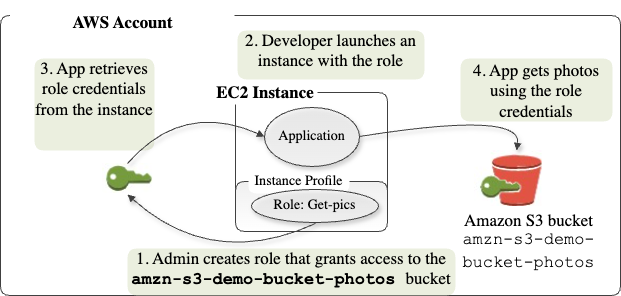
Real world usecase : A web server running on EC2 needs to fetch secrets on AWS System Manager Parameter Store (SSM) and upload logs to S3 bucket-without embedding long-lived api keys in your AMI
Skenario : Design IAM Role WebServerRole that allows only ssm:GetParameter, s3:PutObject.
Create role WebServerRole, with policy allows ssm:GetParameter, s3:PutObject to one bucket prefix
S3 Bukcet
Amazon S3 is an object storage service that offers industry-leading scalability, data availability, security, and performance
To create bucket first navigate to S3
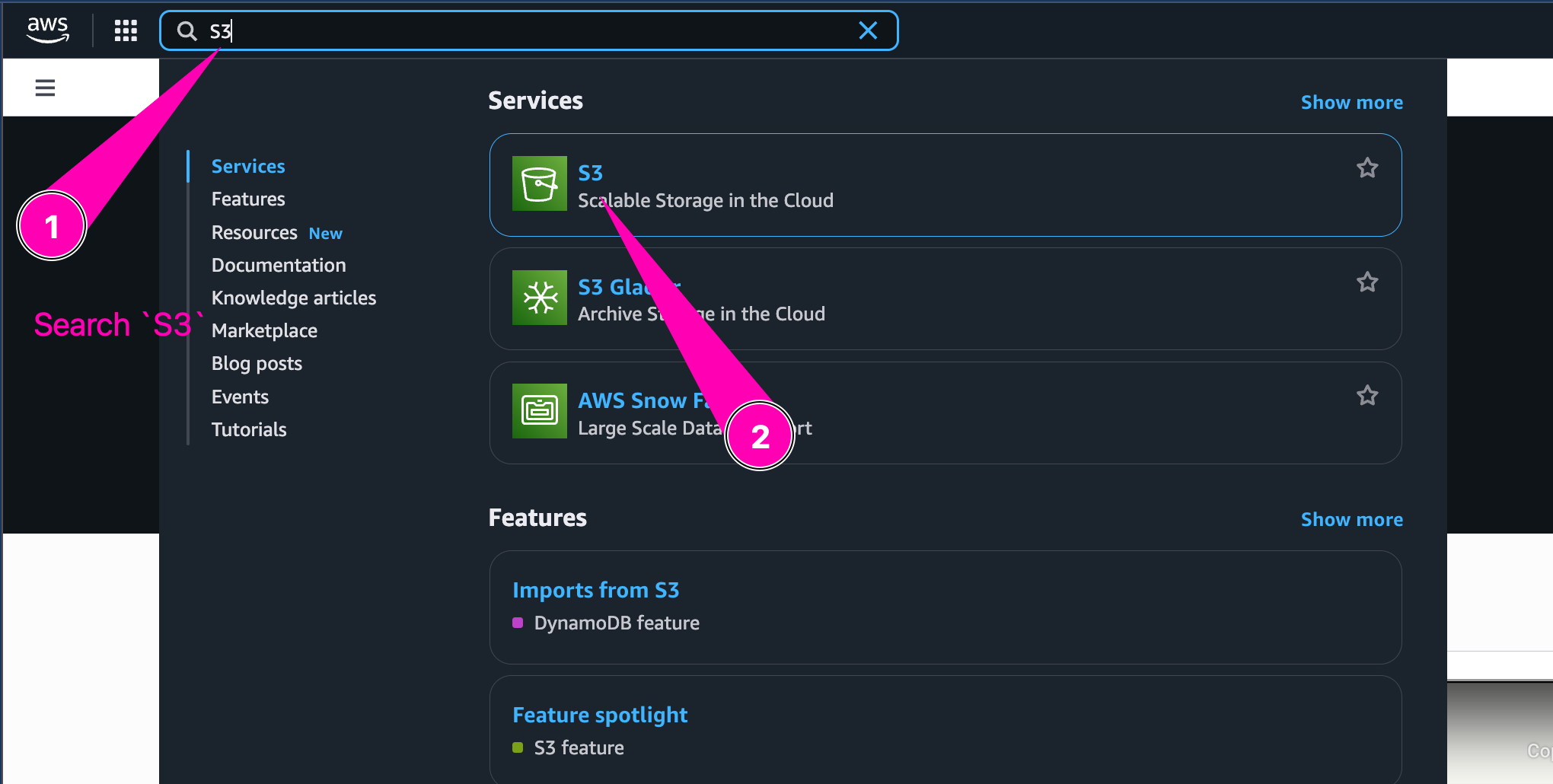
Click Create S3

Begin to setup new bucket
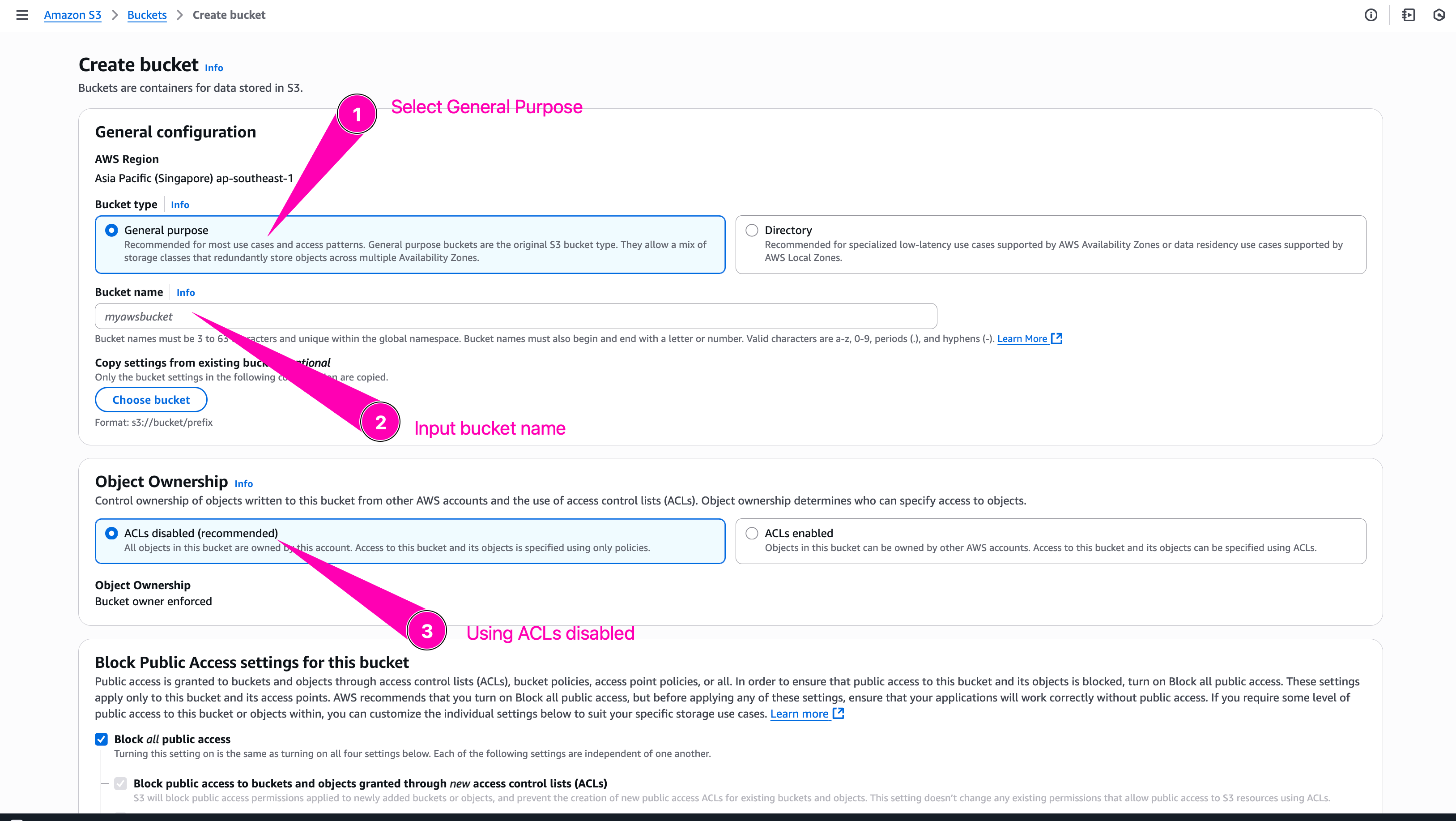
Bucket name must uniqe becaus after a bucket is created, the name of that bucket cannot be used by another AWS account in any AWS Region until the bucket is deleted
Leave everything with default configuration, and click Create Bucket
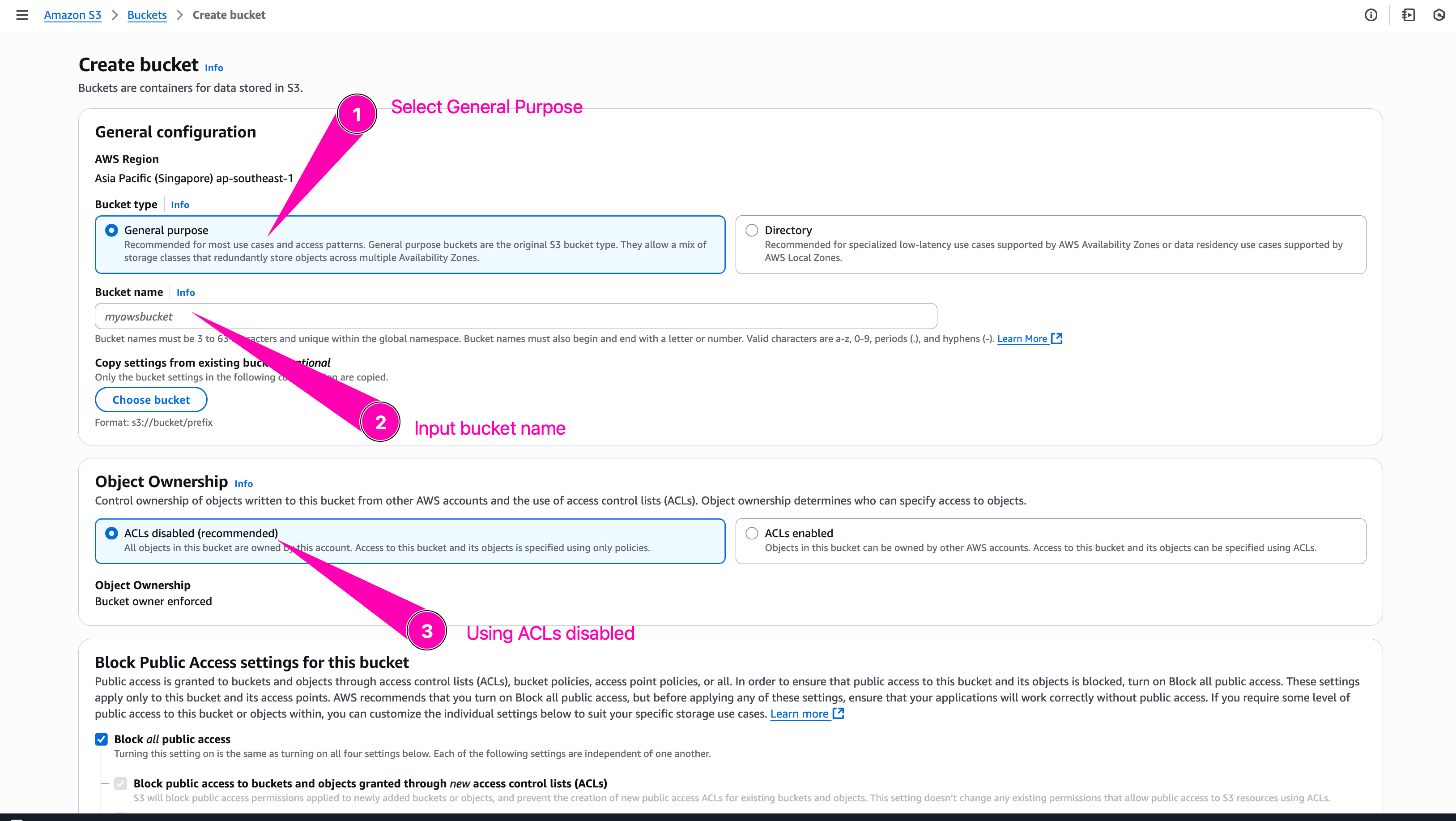
Bucket created.

Role
Create an IAM Role WebServerRole that's allows only ssm:GetParameter, s3:PutObject.
Create policy first, with name GetParameterPutObject. Navigate to Identity and Access Management (IAM) > Policies > Create Policies

We configure policy to allow GetParameter on spesific parameter store path on any region
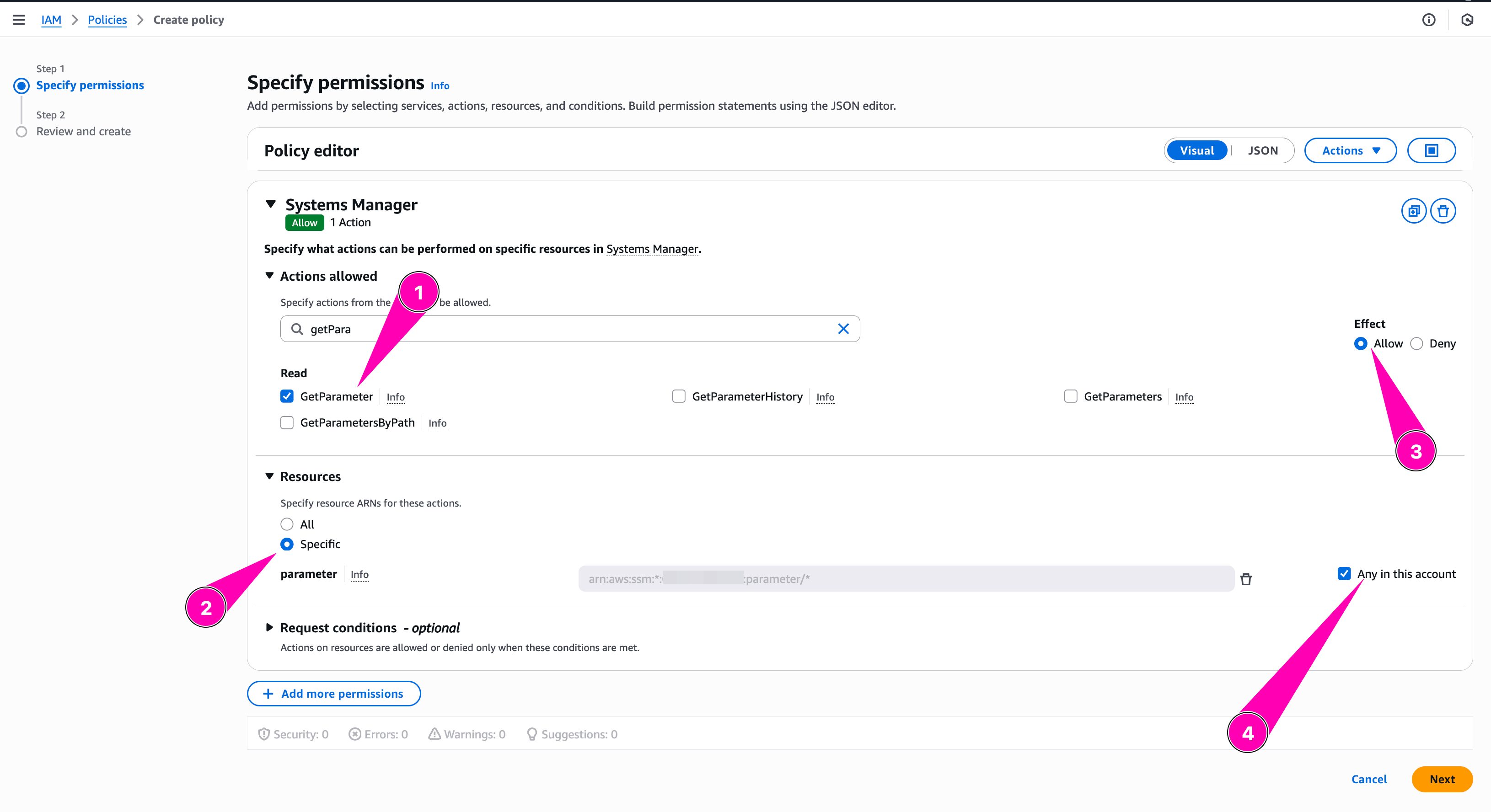
Then we add allow S3:PutObject to spesific bucket we created
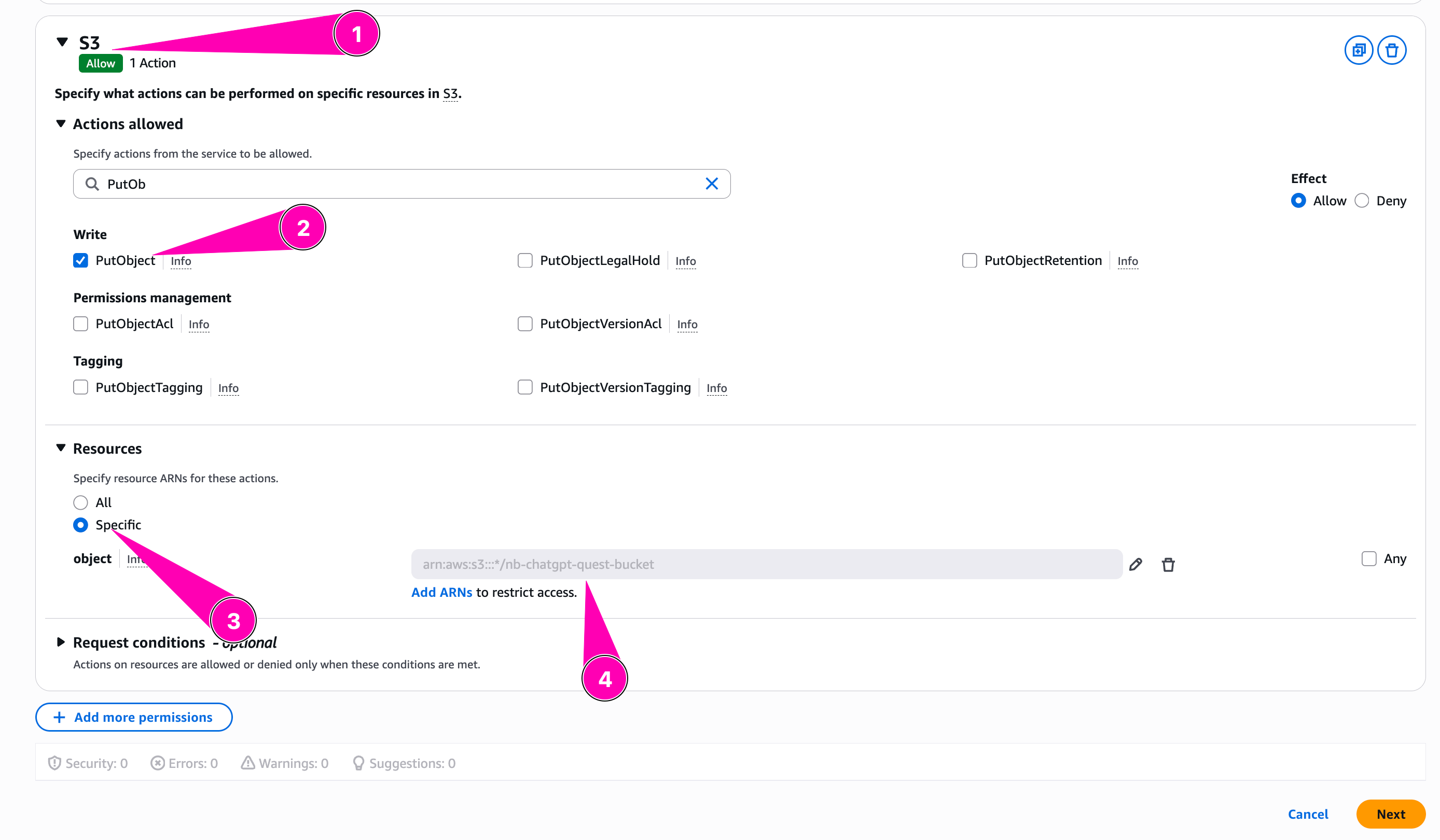
Review all, when seems correct, begin to create policy
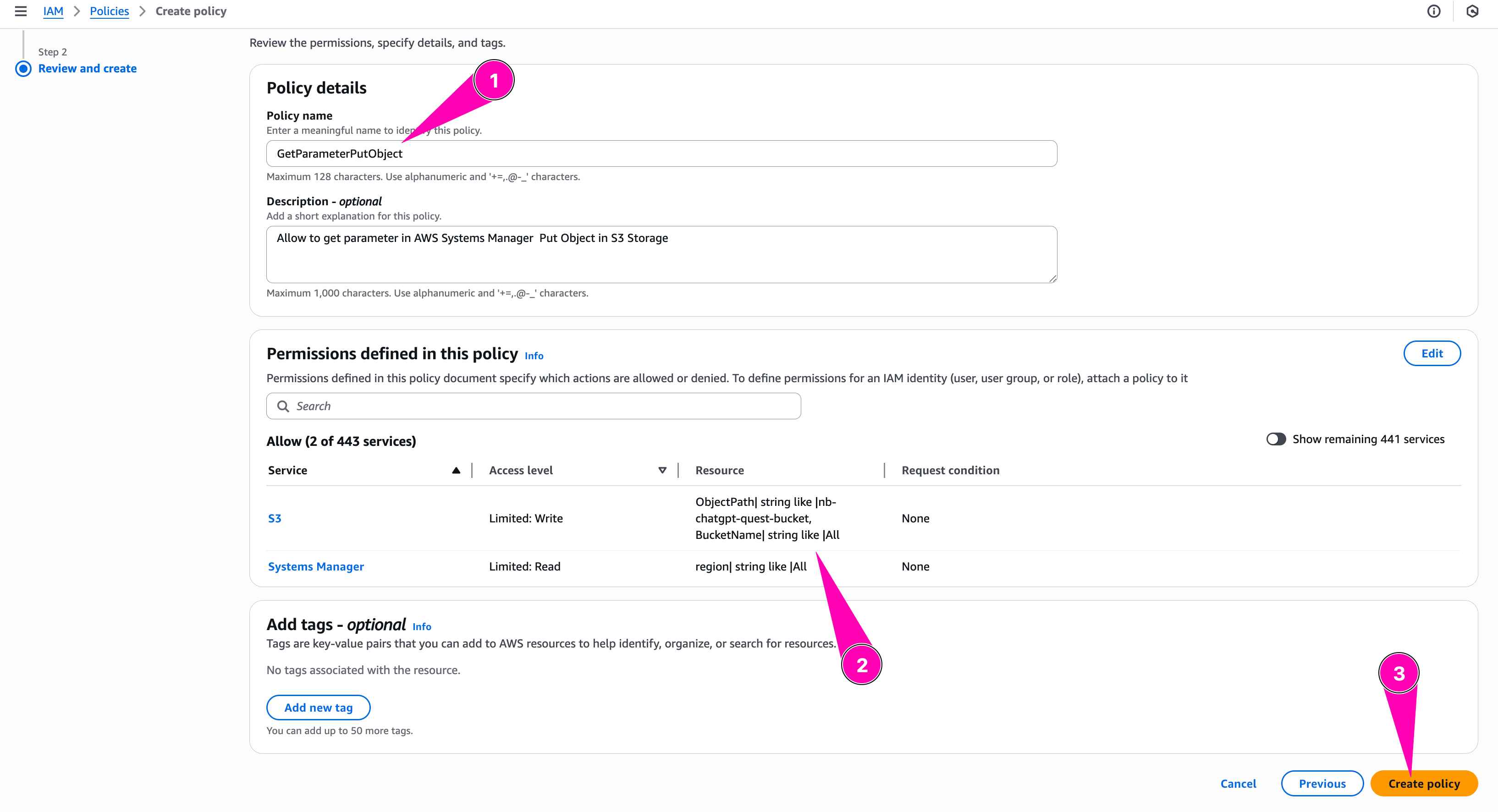
Policy created

Then we assign new policy to role WebServerRole. Navigate to Identity and Access Management (IAM) > Roles > Create Role
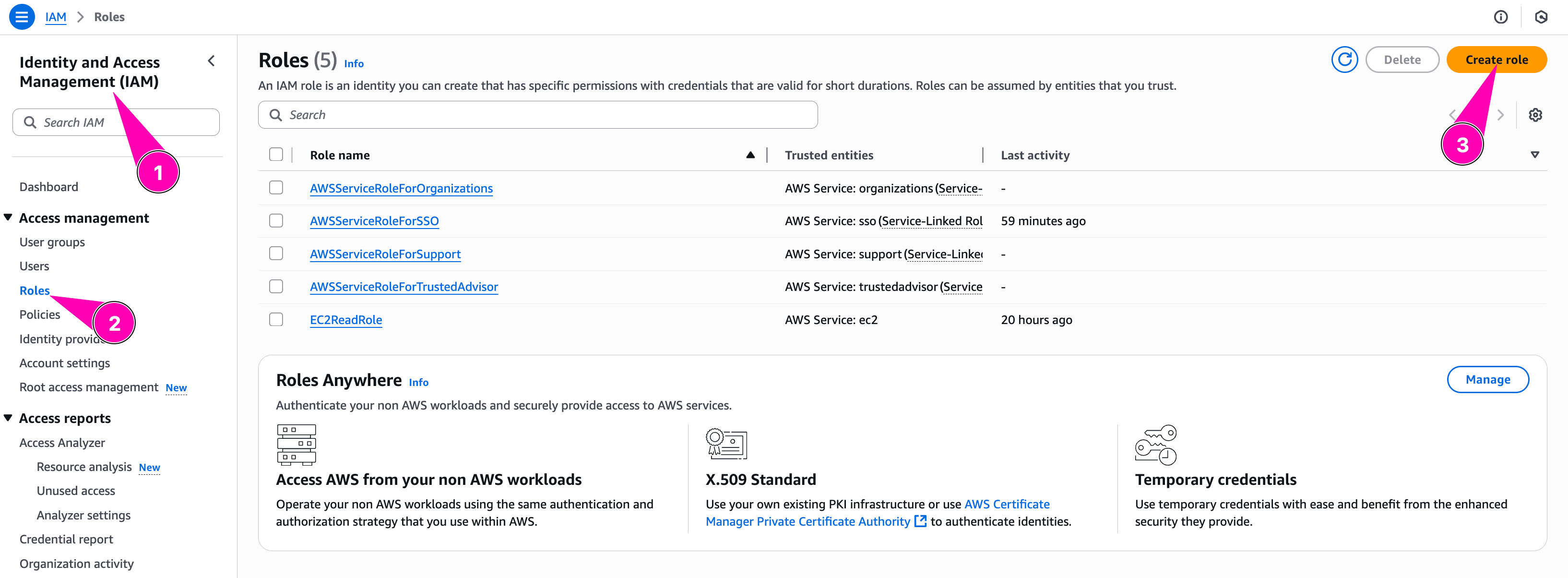
Configure trusted entity type to Aws Service, and select EC2. Because this role attached to EC2 Instances
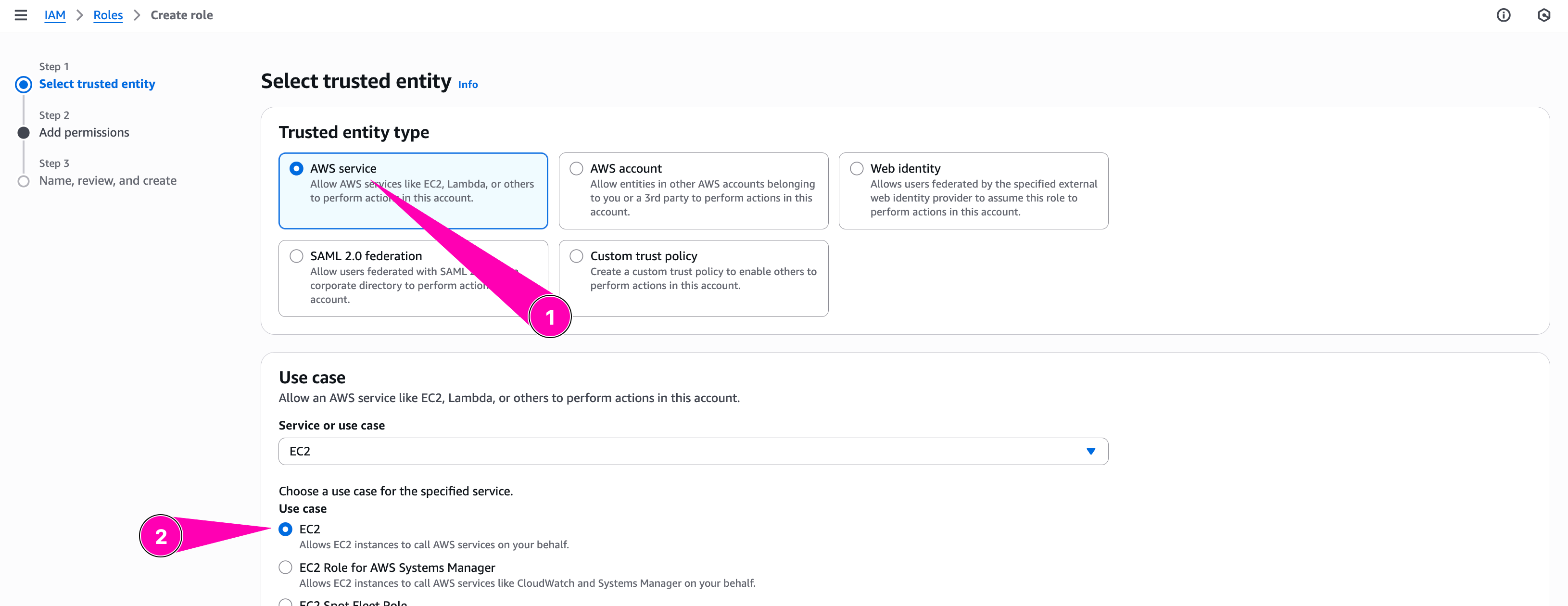
We need to checklist policy we want to attached to role
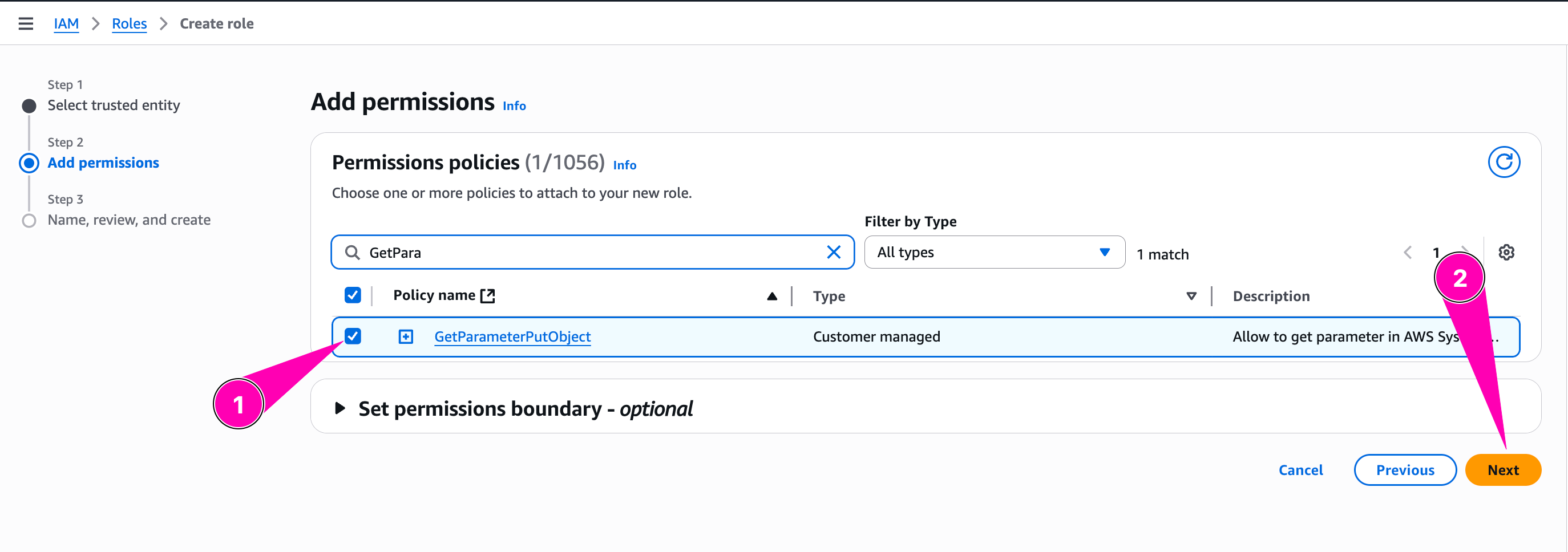
Review again, if all corrected, begin to create role
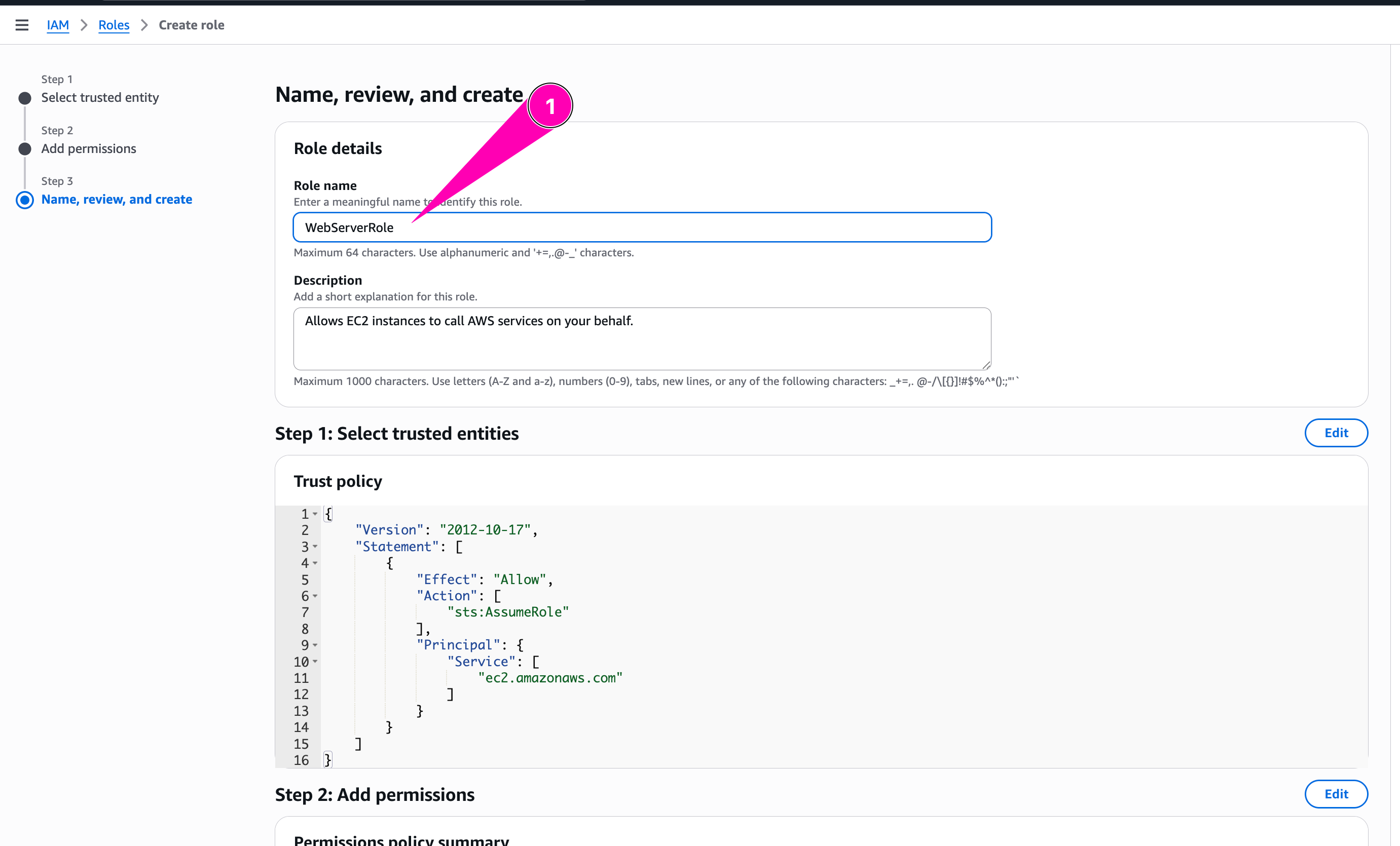
Role WebServerRole created.

Test, launch instance and attach WebServerRole
When provisioning instance, we need to attach WebServerRole in IAM Profile by access to Advanced Details > IAM Instance Profile
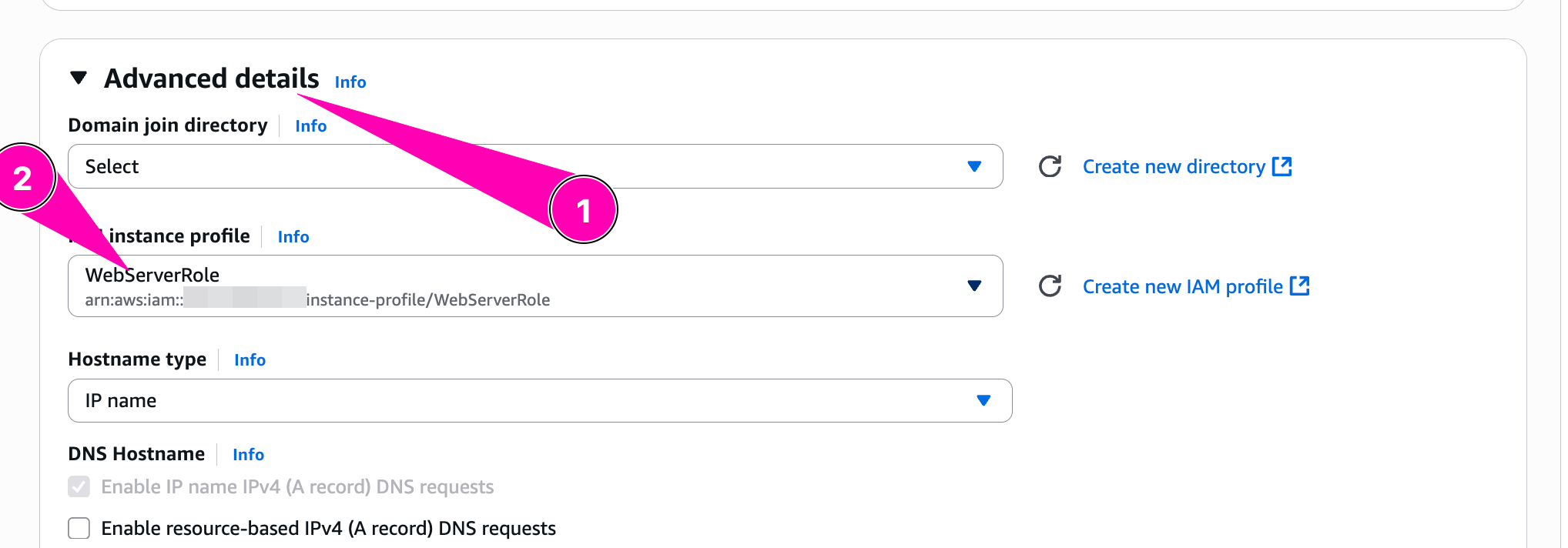
Check role attached using IMDSv2
TOKEN=`curl -X PUT "http://169.254.169.254/latest/api/token" -H "X-aws-ec2-metadata-token-ttl-seconds: 21600"`
curl -H "X-aws-ec2-metadata-token: $TOKEN" \
http://169.254.169.254/latest/meta-data/iam/security-credentials/
Result, successfuly to attach role WebServerRole

Trying to get parameter, nb-test

aws ssm get-parameter

How about delete-parameter

Denied, because doesn't have policy ssm:DeleteParameter
Try to put helo on S3 Bucket


Daily Quest #5: “Terraforming the Multi-Tier VPC”
Terraform is infrastructure as a code tool. Allow user to create anything resources using a declarative code typically HashiCorp Configuration Language (HCL). This can make infrastructure more flexible using code instead of accessing console again-and again.
Reference :
- AWS Providers Terraform
- https://developer.hashicorp.com/terraform/tutorials/aws-get-started
- https://github.com/ngurah-bagus-trisna/aws-vpc-iaac
Infrastructure as Code (IaC) tools allow you to manage infrastructure with configuration files rather than through a graphical user interface. IaC allows you to build, change, and manage your infrastructure in a safe, consistent, and repeatable way by defining resource configurations that you can version, reuse, and share.
So in this section, i want to create IaaC base from this article section Daily Quest #3: AWS Networking & VPC Deep Dive
Setup OpenTofu
Opentofu is opensource alternative for terraform.
Reference :
- https://opentofu.org/docs/intro/install/
I'm using Ubuntu os so i prefer to chose deb install method
curl --proto '=https' --tlsv1.2 -fsSL https://get.opentofu.org/install-opentofu.sh -o install-opentofu.sh
chmod +x install-opentofu.sh
./install-opentofu.sh --install-method deb
# verify install
tofu version
Result
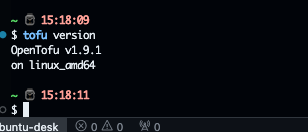
Setup VPC
- Create file
main.tfwith AWS provider and region
terraform {
required_providers {
aws = {
source = "hashicorp/aws"
version = "~> 5.0"
}
}
}
# Configure the AWS Provider
provider "aws" {
region = "ap-southeast-1"
}
- Setup variable.
On terraform, input variable let you customize aspects of modules without altering the module's own source code. This function allows to share modules accrost different terraform configuration. Create file called variable.tf. Reference
variable "vpc_cidr" {
type = string
}
variable "subnet" {
type = map(object({
subnet_range = string
availability_zone = string
type = string
}))
}
variable "natgw_name" {
type = string
}
variable "route_tables" {
type = map(
object({
cidr_source = string
route_destination = string
})
)
}
Then setup main.tf
terraform {
required_providers {
aws = {
source = "hashicorp/aws"
version = "~> 5.0"
}
}
}
# Configure the AWS Provider
provider "aws" {
region = "ap-southeast-1"
}
resource "aws_vpc" "nb-chatgpt-vpc" {
cidr_block = var.vpc_cidr
tags = {
"Name" = "nb-chatgpt-vpc"
}
}
resource "aws_subnet" "nb-subnet" {
vpc_id = aws_vpc.nb-chatgpt-vpc.id
for_each = var.subnet
cidr_block = each.value.subnet_range
availability_zone = each.value.availability_zone
tags = {
"Name" = each.key
"Type" = each.value.type
}
}
resource "aws_internet_gateway" "nb-inet-gw" {
vpc_id = aws_vpc.nb-chatgpt-vpc.id
tags = {
Name = "nb-inet-gw"
}
}
resource "aws_eip" "nb-eip-nat-gw" {
tags = {
"Name" = "nb-eip-nat-gw"
}
}
locals {
public_subnet_ids = [
for key, subnet in var.subnet : aws_subnet.nb-subnet[key].id
if subnet.type == "public"
]
private_subnet_ids = [
for key, subnet in var.subnet : aws_subnet.nb-subnet[key].id
if subnet.type == "private"
]
}
resource "aws_nat_gateway" "nb-nat-gw" {
depends_on = [aws_eip.nb-eip-nat-gw]
allocation_id = aws_eip.nb-eip-nat-gw.id
subnet_id = local.public_subnet_ids[0]
connectivity_type = "public"
tags = {
"Name" : var.natgw_name
}
}
resource "aws_route_table" "net-public" {
for_each = var.route_tables
vpc_id = aws_vpc.nb-chatgpt-vpc.id
route {
cidr_block = each.value.cidr_source
gateway_id = each.value.route_destination == "igw" ? aws_internet_gateway.nb-inet-gw.id : null
nat_gateway_id = each.value.route_destination == "nat" ? aws_nat_gateway.nb-nat-gw.id : null
}
}
resource "aws_route_table_association" "public" {
subnet_id = aws_subnet.nb-subnet["public-net"].id
route_table_id = aws_route_table.net-public["public"].id
}
resource "aws_route_table_association" "private" {
subnet_id = aws_subnet.nb-subnet["private-net"].id
route_table_id = aws_route_table.net-public["private"].id
}
output "vpc_id" {
value = aws_vpc.nb-chatgpt-vpc.id
}
output "public_subnet_id" {
value = local.public_subnet_ids
}
output "private_subnet_id" {
value = local.private_subnet_ids
}
output "nat_gateway_public_ip" {
value = aws_nat_gateway.nb-nat-gw.public_ip
}
Then setup all value for variable in dev.tfvars
vpc_cidr = "10.0.0.0/16"
subnet = {
"public-net" = {
subnet_range = "10.0.1.0/24"
availability_zone = "ap-southeast-1c"
type = "public"
},
"private-net" = {
subnet_range = "10.0.2.0/24"
availability_zone = "ap-southeast-1c"
type = "private"
}
}
natgw_name = "nb-natgw"
route_tables = {
"private" = {
cidr_source = "0.0.0.0/0"
route_destination = "nat"
},
"public" = {
cidr_source = "0.0.0.0/0"
route_destination = "igw"
}
}
Then Init, plan, apply
tofu init
tofu plan -var-file=dev.tfvars
# if everything correct, apply to create resources
tofu apply
Result
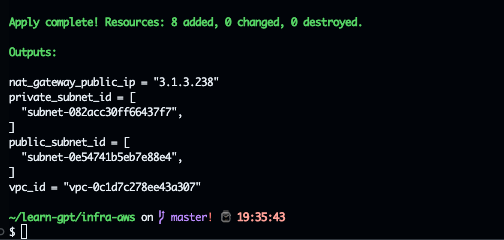
Testing
Create 2 ec2 instances
Instance : public-net, Attach public subnet, and attach elastic-ip for access. Access to instances, check public_ip,
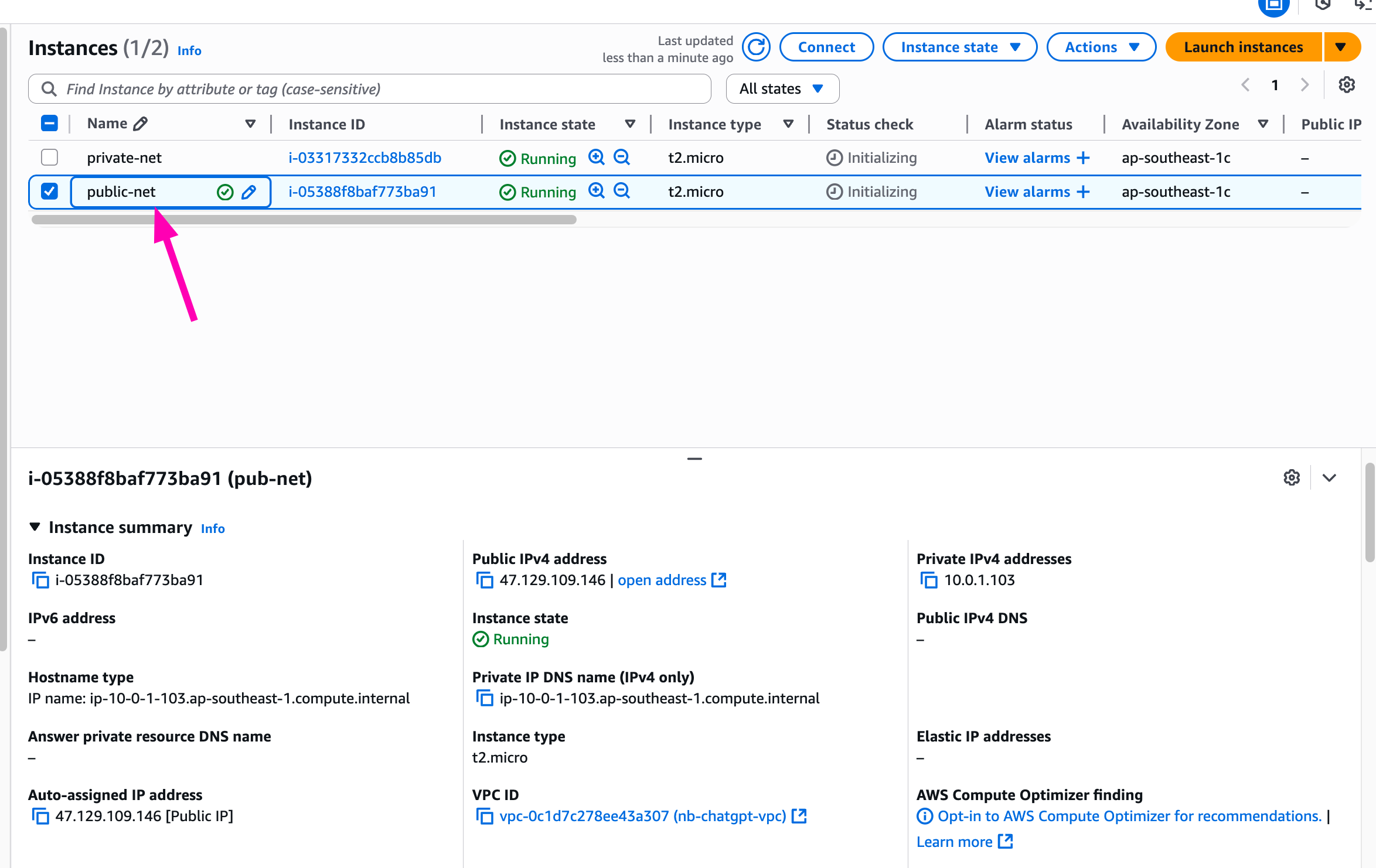
public-net instance using same as public_ipv4 attached to instance.

Then access private-net instances from public-net. Makesure public ip using nat gateway address.
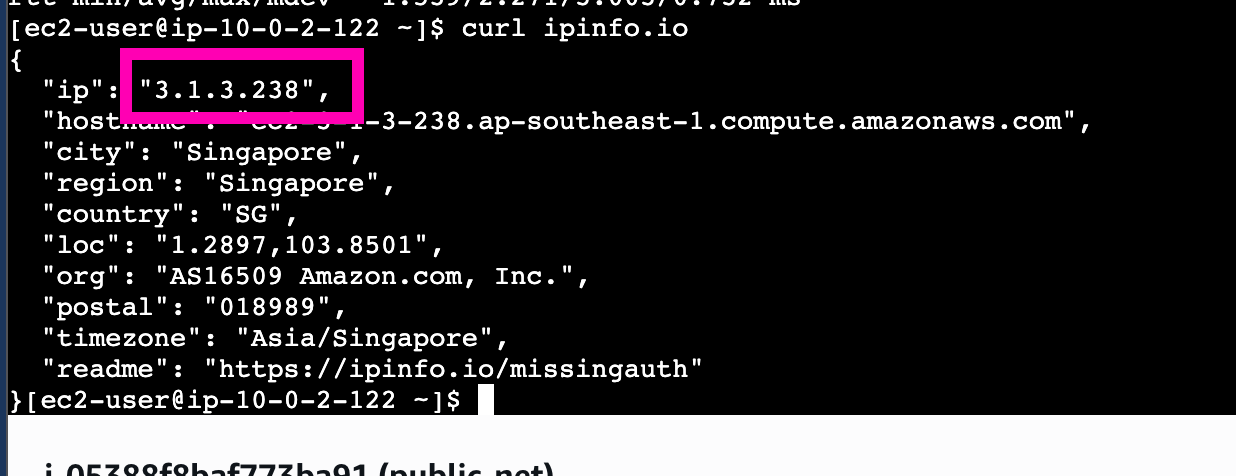
Using nat-gateway address.




